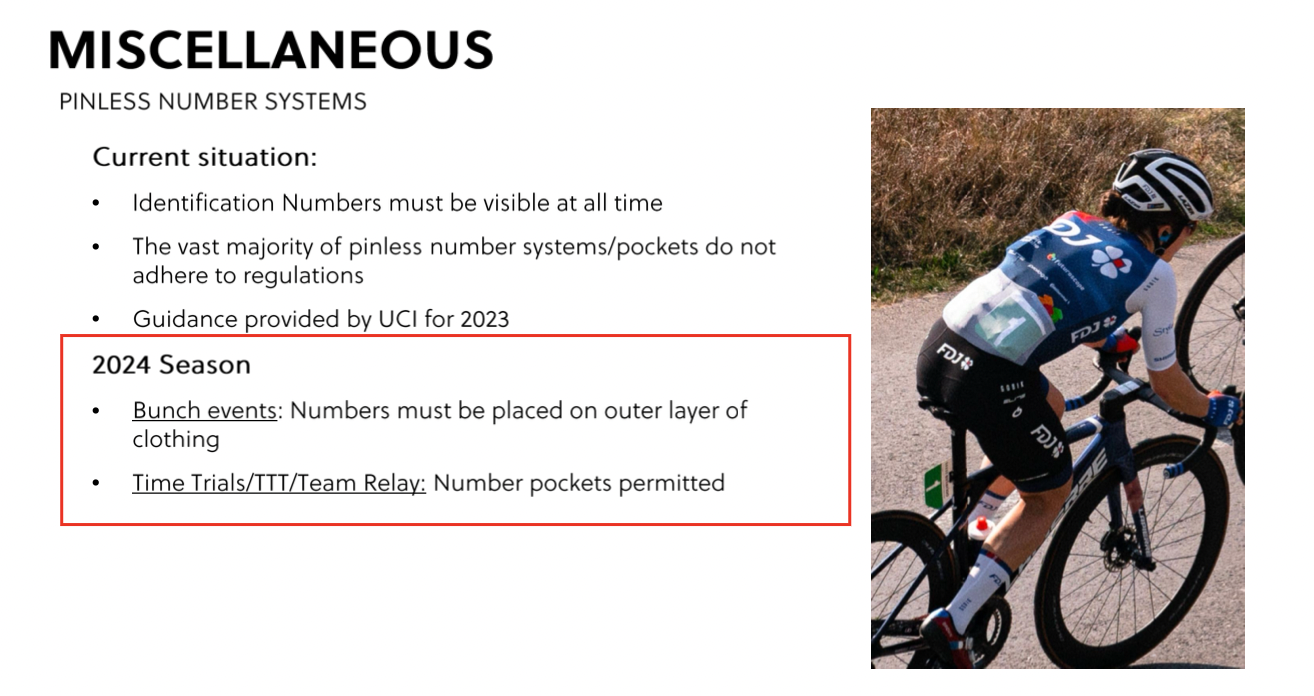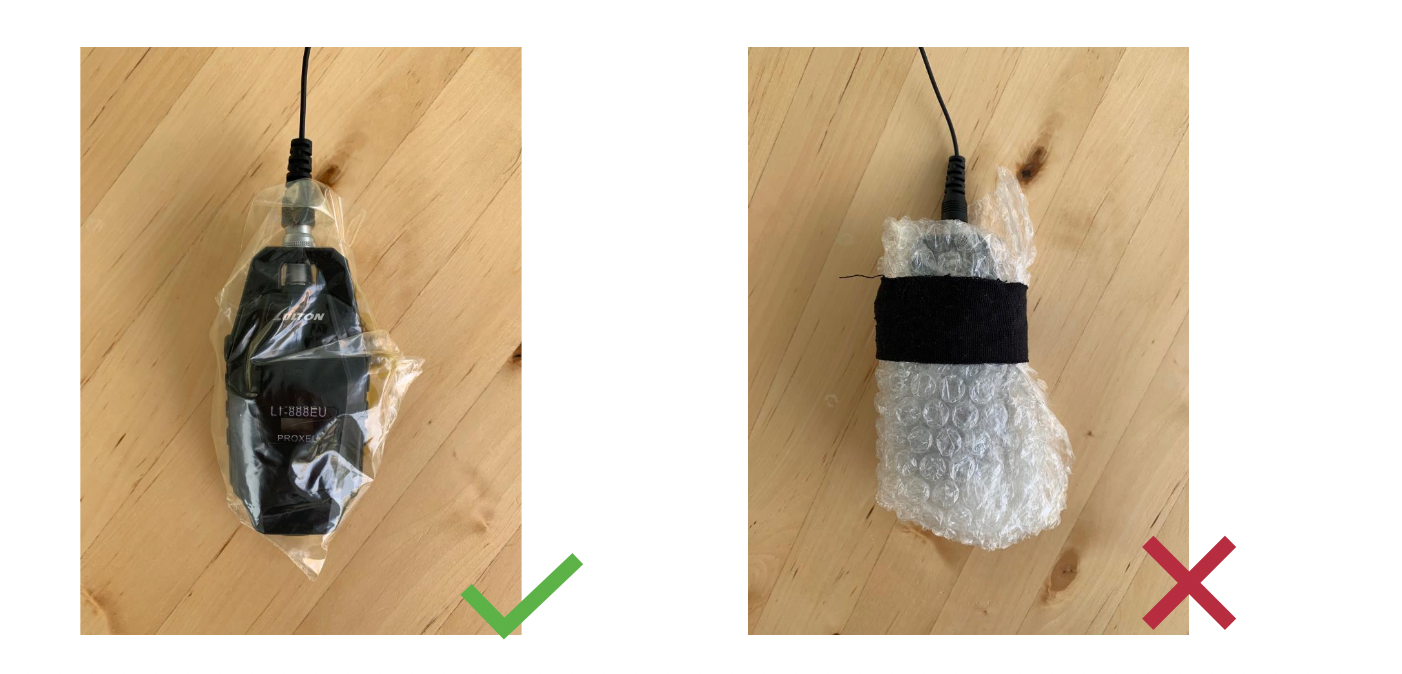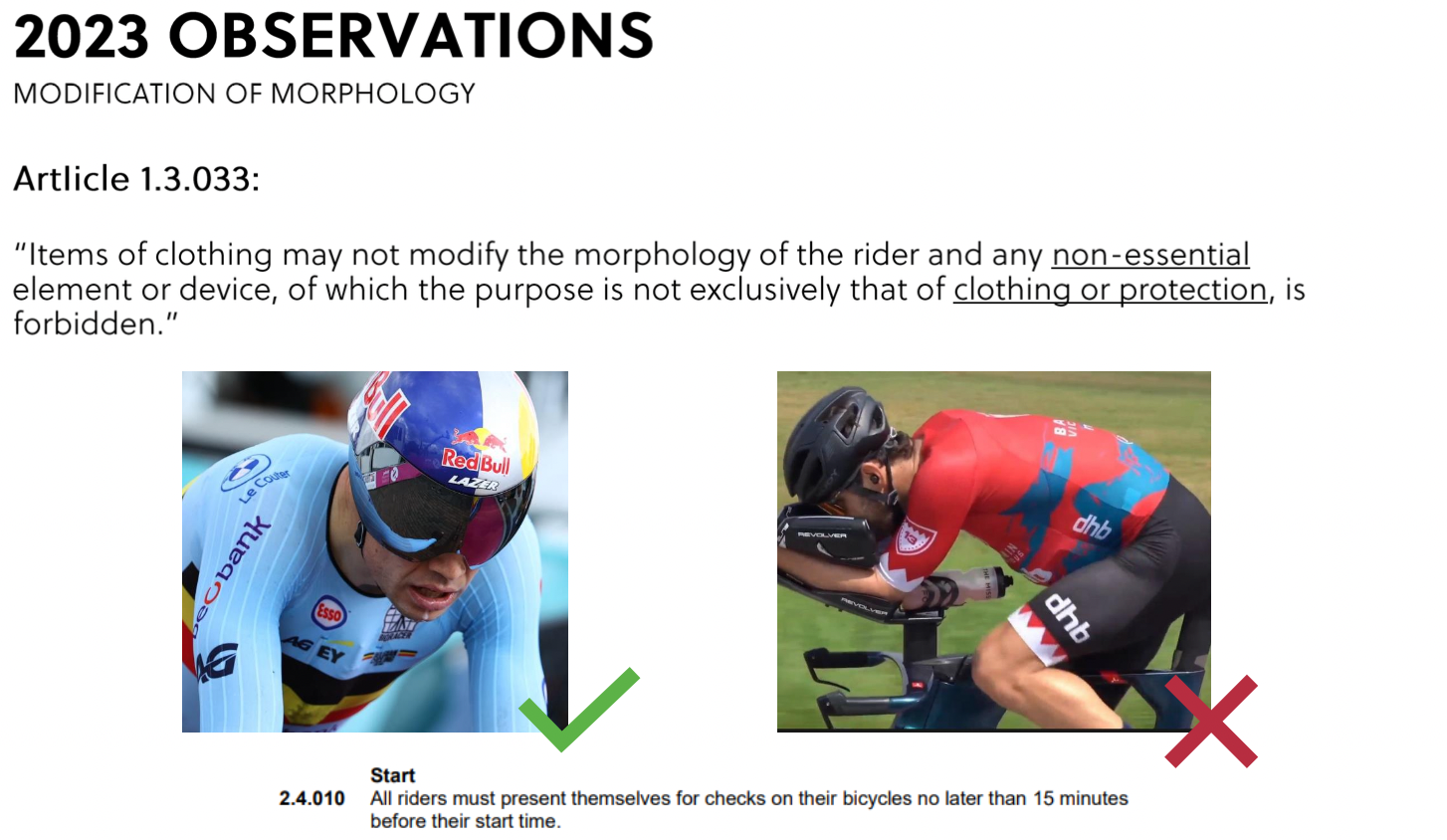The UCI’s plans to restrict and eventually ban the “extreme inward inclination of the brake levers” (UCI speak for “pointy-in levers”) made the headlines earlier today, but a UCI internal presentation Escape Collective secured unveils a raft of other regulation updates in the pipeline.
Wheel approval
First up is a new UCI wheel approval process effective January 1, 2024, accompanied with images of tyre failures at Paris-Roubaix and in a sprint finish. Little is yet known of the exact changes to the approval process, but the document mentions a process involving the UCI’s Innovation Unit and wheel manufacturers.
What we do know is that as of the turn of the year, the wheel homologation procedure will now also apply to TT and track wheels, which somewhat surprisingly isn’t currently the case.
Furthermore, the UCI references the relatively new ISO standards, which it seems will form the basis of the new approval process. ISO 5775 1:2023 specifies the designations and dimensions for clincher tyres mounted on straight side or crotchet-type rims, tubeless tyres, tubeless-ready tyres, tube type and “beaded edge” tyres mounted on hooked bead rims, and ISO 5775 2:2021 relating to tyre fitment relevant to geometrical dimensions and designations for straight-side, hooked bead, and crotchet rims.
Confused much? You are not alone. The UCI document contains a slide titled “tubeless tire system. Issue” highlighting the difference between clincher, tubeless with hooks, and tubeless hookless. The document also highlights the importance of teams engaging with their suppliers to ensure rim and tyre compatibility and a further warning not to exceed maximum recommended tyre pressures.
Back numbers
First mooted ahead of the 2022 Tour de France, the UCI will now officially ban “pinless number systems for bunch events and road races” aka the plastic or fabric back number pockets in road races.
The somewhat transparent pockets – a concept I first saw used by Sam Bennett thanks to a local seamstress some 12 years or more ago, and first produced en masse by NoPinz – replace the more traditional safety pins and/or spray adhesive in attaching a riders “dossard” (racing number attached to the bottom rear section of a jersey in races). The pockets are a heck of a lot handier than pinning numbers to one’s jersey, but can make the number difficult to see in high-glare lighting or if the number is not inserted correctly.
The UCI’s tech regs update document references a “2024 season” update, which now means “numbers must be placed on outer layer of clothing,” although the exact regulation wording may well change.

Time trials
The UCI also presented some observations from 2023. Chiefly amongst these were what we can only assume were friendly reminders for teams and manufacturers of current regulations. Notably amongst these were what the UCI calls “modification of morphology – race radio.” This refers to the popular TT hack of wrapping your radio in something padded and sticking it down the front of your skinsuit, or “on-body aero fairings” to readers of Escape Collective.
The UCI has now clarified that wrapping a radio in a plastic bag is fine, whereas wrapping said radio in bubble wrap is not. Because, one must assume, it’s less of a problem to break a rib landing on a hardshell plastic radio than to break a UCI rule.

The UCI has also taken the opportunity to clarify some hydration issues, namely how exactly a non-bottle-shaped bottle may integrate with a matching non-bottle-shaped frame. Specifically, a bottle may not be integrated with a frame, and riders may not mount bottles behind the stem or saddle. Furthermore, the UCI highlighted that “it is forbidden to place an empty bottle (without any liquid) on the bicycle” and that “bottle systems shouldn’t diverge from their original function.” Oh yeah, there was also a reminder that CamelBak hydration systems may only be used on the rider’s back and over their race clothing.
But wait, wasn’t that already the case? Well, kind of. The UCI is seemingly set to update the regulations in this space to, well, enforce a space between frame and bottle. Where previously the regulations stated “it must be possible to pass a rigid card (like a credit card) between the bottle and the tube to which it is attached,” an update looks set to mandate that a bottle cannot be positioned on two tubes at once, i.e. a bottle may not bridge a down tube and seat tube.

Some TT bikes, most notably Colnago’s new TT1, cleverly skirted said rules by creating a bottle cage that closely mimicked the frame tubes, but crucially left a card’s width in certain area/s to pass the UCI test. While those frames have already been approved, and it is extremely unlikely approval would be rescinded, the new proposals likely mean such designs will not be permitted in future.
Finally, there was a reminder for teams and riders of article 1.3.033 of the UCI regulations stating, “Items of clothing may not modify the morphology of the rider and any non-essential element or device, of which the purpose is not exclusively that of clothing or protection, is forbidden,” and the requirement for riders to present to the start area for pre-time trial checks at least 15 minutes before their start.

Finally, on the time trialling front, there was an open discussion on “head down TT positions,” although it is not known what that discussion entailed or any developments from it. While it seems there won’t be any immediate moves to regulate against said positions, the UCI is clearly monitoring its use. Watch this space.
What did you think of this story?

